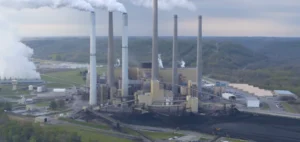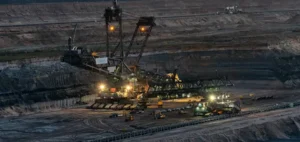Faced with extreme heat this summer, an energy shortage and rising gas and oil prices, China has increased its coal production, raising concerns about the climate consequences of this choice.
Yet President Xi Jinping had pledged to reduce the use of coal from 2026 as part of a series of commitments to reduce China’s CO2 emissions by 2030 and achieve carbon neutrality by 2060.
China, the world’s largest emitter of greenhouse gases, has reduced its CO2 emissions for four consecutive quarters due to slower economic growth, according to a study published in early September by the climate observatory Carbon Brief.
But to revive their economy, the authorities are relying on an increase in the production of coal, an energy source that is particularly harmful to the climate.
This policy of support for this sector, which accounts for most of its electricity production, worries experts who fear that it will complicate a possible transition to greater use of renewable energy.
Last fall, fearing an energy shortage, the authorities ordered coal producers to increase their extraction capacity by 300 million tonnes by 2022, the equivalent of one more month of coal production for the country.
As of the first quarter of 2022, Chinese regulators have authorized coal mines with a total capacity of 8.63 gigawatts, according to Greenpeace. This is already almost half of the approved capacity for the entire year 2021.
Avoiding shortages
In recent weeks, due to the unprecedented heat wave, more coal has been burned and extracted to run air conditioners and to compensate for the reduced production of hydro dams due to the drying up of rivers.
In June, Premier Li Keqiang called for “increasing coal production capacity as much as possible and establishing long-term coal supply.”
According to the independent Climate Action Tracker, even the “most stringent” climate targets set by Beijing to combat warming would lead to global warming of 3 to 4°C before the end of the century, well beyond the Paris agreement’s goal of limiting global warming to 1.5°C.
To meet this goal, China will need to “reduce its emissions as soon as possible and well before 2030″ and “cut coal and other fossil fuel consumption at a much faster rate than previously expected.”
Beijing’s reluctance to move away from coal is due in part to the inefficiency of its power grid, which does not allow for the transport of surplus energy from one region to another.
Coal and gas provide an immediate source of energy and are, in practice, “the only way for local authorities to avoid power shortages,” wrote researcher Lauri Myllyvirta in a Carbon Brief report.
More complicated transition
However, China has made real progress in renewable energy. The country’s current operational solar capacity represents nearly half of the world’s total, according to the San Francisco-based NGO Global Energy Monitor (GEM).
But unlike wind or solar power, coal and gas stocks can be stored and used as needed, giving local authorities a sense of security.
Yet building more coal-fired facilities means less focus on solving grid problems, Myllyvirta told AFP, fearing that this will cause plant owners to “slow down the transition because they will have an incentive to use their brand new assets.”
At the same time, the central government wants to “avoid large-scale power outages, such as those that hit northeastern provinces last winter, in what is a politically crucial year for Mr. Xi,” according to Byford Tsang, senior policy advisor at the climate think tank E3G.
President Xi is expected to win an unprecedented third term in power at the Communist Party Congress on October 16.
Tsang said the surge in global energy prices due to Russia’s invasion of Ukraine has also prompted Beijing to boost its domestic coal production, pointing to a 17.5% drop in coal imports in the first half of 2022 compared to last year.
“The more China relies on coal now, the harder it becomes to finance and implement renewable energy projects later,” Wu Jinghan, climate and energy project manager for Greenpeace in East Asia, told AFP.
“The longer we wait to make the transition, the more complicated the path to transition becomes,” he added.






















